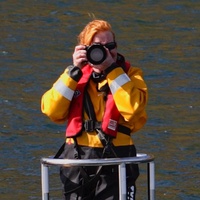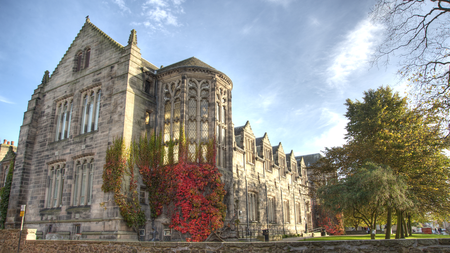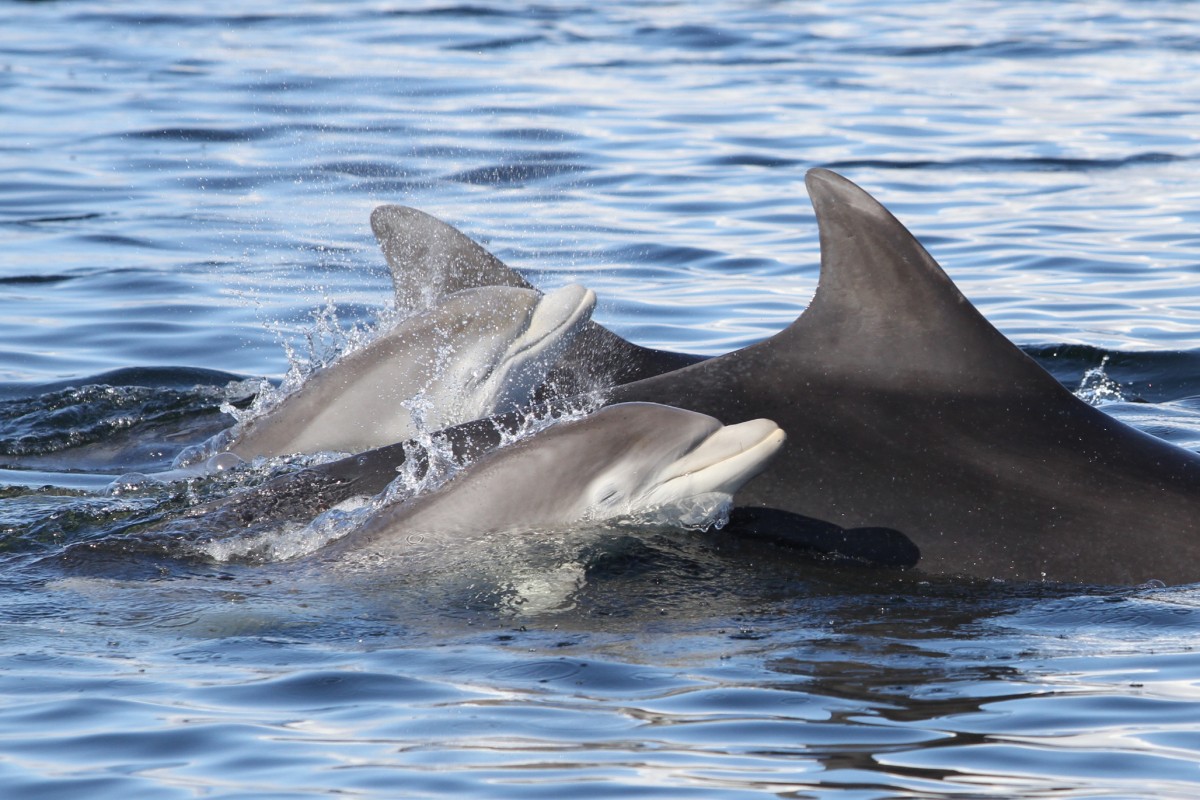
Advanced Research Fellow
- About
-
- Email Address
- b.cheney@abdn.ac.uk
- Office Address
The Lighthouse Field Station
University of Aberdeen
George Street
Cromarty
Ross-shire IV11 8YL
- School/Department
- School of Biological Sciences
Biography
I am a research fellow in the School of Biological Sciences, based at the University's Lighthouse Field Station, where I manage our long-term bottlenose dolphin individual based study.
My current research interest centres on the use and development of techniques, including photo-ID, photogrammetry and acoustics, to study aspects of individual marine mammals to inform ecology and conservation.
Spy in the sky
Long-term individual-based studies provide a unique opportunity to apply unoccupied aerial system (UAS) photogrammetry to non-invasively measure body morphometrics of individuals with known life history information. Our latest study demonstrates that UAS measurements of body width can accurately assign pregnancy status in bottlenose dolphins.
Qualifications
- PhD Ecology2017 - University of Aberdeen
Temporal variation in the demographics and dynamics of a bottlenose dolphin population.
- BSc Marine Biology2004 - University of Aberdeen
- BA Business Studies1992 - Glasgow Caledonian University
Latest Publications
Dolphin social phenotypes vary in response to food availability but not the North Atlantic Oscillation index
Proceedings of the Royal Society B: Biological Sciences, vol. 290, no. 2008Contributions to Journals: ArticlesA deep learning approach to photo–identification demonstrates high performance on two dozen cetacean species
Methods in Ecology and Evolution, vol. 14, no. 10, pp. 2611-2625Contributions to Journals: ArticlesVariation in foraging activity influences area-restricted search behaviour by bottlenose dolphins
Royal Society Open Science, vol. 10, no. 6, 221613Contributions to Journals: ArticlesTowards Automatic Cetacean Photo-Identification: A Framework for Fine-Grain, Few-Shot Learning in Marine Ecology
Chapters in Books, Reports and Conference Proceedings: Conference Proceedings- [ONLINE] DOI: https://doi.org/10.1109/BigData55660.2022.10020942
Spy in the sky: a method to identify pregnant small cetaceans
Remote Sensing in Ecology and Conservation, vol. 8, no. 4, pp. 492-505Contributions to Journals: Articles
- Research
-
Research Overview
The Lighthouse Field Station research aims to study how natural and anthropogenic variation affects the behaviour, life history and vital rates of marine top predators. I manage our long-term individual based study of bottlenose dolphins on the east coast of Scotland. My current research focuses on the application of individual based studies in marine mammal conservation and I am specifically interested in the use and development of techniques to study the ecology of individual marine mammals.
Research Areas

Biological and Environmental Sciences
Research Specialisms
- Ecology
- Marine Biology
- Population Biology
- Population Ecology
Our research specialisms are based on the Higher Education Classification of Subjects (HECoS) which is HESA open data, published under the Creative Commons Attribution 4.0 International licence.

Investigating fecundity and calf survival
Accurately estimating variation in reproduction and survival is critical for supporting conservation. Data from our long-term individual based bottlenose dolphin study was applied in a novel method, allowing for uncertainty in breeding status, to investigate changes in fecundity and calf survival in this protected population.
- Teaching
-
- Publications
-
Page 1 of 4 Results 1 to 10 of 35
Dolphin social phenotypes vary in response to food availability but not the North Atlantic Oscillation index
Proceedings of the Royal Society B: Biological Sciences, vol. 290, no. 2008Contributions to Journals: ArticlesA deep learning approach to photo–identification demonstrates high performance on two dozen cetacean species
Methods in Ecology and Evolution, vol. 14, no. 10, pp. 2611-2625Contributions to Journals: ArticlesVariation in foraging activity influences area-restricted search behaviour by bottlenose dolphins
Royal Society Open Science, vol. 10, no. 6, 221613Contributions to Journals: ArticlesTowards Automatic Cetacean Photo-Identification: A Framework for Fine-Grain, Few-Shot Learning in Marine Ecology
Chapters in Books, Reports and Conference Proceedings: Conference Proceedings- [ONLINE] DOI: https://doi.org/10.1109/BigData55660.2022.10020942
Spy in the sky: a method to identify pregnant small cetaceans
Remote Sensing in Ecology and Conservation, vol. 8, no. 4, pp. 492-505Contributions to Journals: ArticlesFar-field effects of impulsive noise on coastal bottlenose dolphins
Frontiers in Marine Science, vol. 8, 664230Contributions to Journals: ArticlesBottlenose dolphins in the Netherlands come from two sides: across the North Sea and through the English Channel
Journal of the Marine Biological Association of the United Kingdom, vol. 101, no. 5, pp. 853-859Contributions to Journals: ArticlesBalancing risks of injury and disturbance to marine mammals when pile driving at offshore wind farms
Ecological Solutions and Evidence, vol. 1, no. 2, e12034Contributions to Journals: Articles- [ONLINE] https://doi.org/10.5061/dryad.34tmpg4hs
- [ONLINE] DOI: https://doi.org/10.1002/2688-8319.12034
- [OPEN ACCESS] http://aura.abdn.ac.uk/bitstream/2164/15974/1/Thompson_etal_Balancing_risks_VOR.pdf
- [ONLINE] Peer review history
Changing distribution of the east coast of Scotland bottlenose dolphin population and the challenges of area‐based management
Aquatic Conservation: Marine and Freshwater Ecosystems, vol. 29, no. S1, pp. 178-196Contributions to Journals: Articles- [ONLINE] DOI: https://doi.org/10.1002/aqc.3102
- [OPEN ACCESS] http://aura.abdn.ac.uk/bitstream/2164/15081/1/Arso_Civil_et_al_AQC_18_0287.R2.pdf
- [ONLINE] View publication in Scopus
Harbour porpoise responses to pile-driving diminish over time
Royal Society Open Science, vol. 6, no. 6, 190335Contributions to Journals: Articles- [ONLINE] DOI: https://doi.org/10.5061/dryad.5qg30sd
- [OPEN ACCESS] http://aura.abdn.ac.uk/bitstream/2164/12504/1/Harbour_porpoise_responses_to_pile_driving_diminish_over_time.pdf
- [ONLINE] View publication in Scopus
- [ONLINE] https://royalsocietypublishing.org/doi/10.1098/rsos.190335
- [ONLINE] View publication in Mendeley
- [ONLINE] View publication in Mendeley
